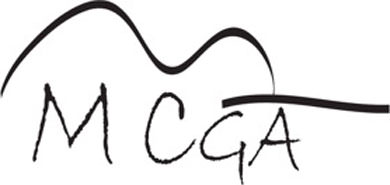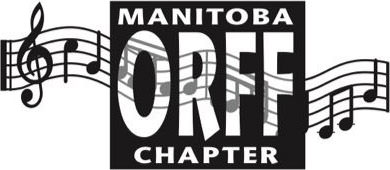Please note that this document will be revised as circumstances change and new information/research becomes available.
The Association of Music Administrators of Manitoba (AMAM), in consultation with the Manitoba Music Educators’ Association (MMEA) and its partner groups, which represent guitar, band, choral and elementary music educators in our province, have worked together to prepare this list of recommendations for school reopening in accordance with current Manitoba Health guidelines. We hope that by doing some detailed thinking around concerns that are specific to our specialty areas, we can offer some meaningful parameters for school reopening, while being cognizant of the changing landscape of our situation and the need to respond to new instructions from government as the situation unfolds.
As music educators, we must stress the importance of the arts in helping students feel comfortable and providing them with a sense of belonging at school. Arts education is a crucial component of student well being and provide a strong foundation for learning in all areas of the curriculum. We hope these recommendations will assist policy makers in understanding the unique considerations of a return to music classrooms, while stressing the importance of continuing to provide music programming for all.
* Singing together is not currently permitted under Phase 2 guidelines.
Physical Space
Music classes continue in music rooms if possible unless public authorities discourage the use of shared spaces. In this case, music teachers can move between homeroom classes
Markings on floor to indicate where students can sit/stand according to physical distancing guidelines
Extra time in schedule between groups for cleaning/transitions Re-evaluate exit/entrance and line-up procedures, especially at the elementary level
Maximum number of students determined depending on space available in accordance with Manitoba Health social distancing guidelines
Research may indicate more spacing needed for choir* and some wind instruments (new studies are ongoing and the document will be adjusted accordingly when available)
Teacher requires more space when facing the group and all students must face the same direction
Need for larger space requires that some equipment be put in storage
Designated entrance and exit in rooms with more than one door
Equipment
Each student has their own instrument/manipulatives, music/pencils. Sharing of instruments or equipment should be avoided unless they can be cleaned thoroughly. No sharing of wind instruments.
Instrument assignments will take place using alternative strategies, including a survey of student preferences, physical characteristics, simulated embouchure formation without the use of instruments, and the recommendations of the student’s last music teacher.
Student carries instruments and equipment with them and takes them home, when applicable
Large band instruments and guitars should be stored in the music room in designated spaces for each instrument and clearly labelled.
Use of large percussion equipment limited, wiped down at the end of each class.
Cleaning products comply with disinfecting guidelines without damaging equipment (see product and cleaning recommendations)
If mandated by Health Manitoba, masks used when possible, e.g. entering and leaving rooms, between playing/singing* sessions and when using instruments that allow it (percussion, guitar, strings)
Product and cleaning recommendations
NAfME cleaning guide: https://www.nfhs.org/articles/covid-19-instrument-cleaning-guidelines
Cleaning required during school day done by teachers (older students can be responsible for disinfecting their own equipment, under teacher supervision), using divisionally approved cleaners that do not damage instruments
Handwashing or hand sanitization before entering music room, and before returning to classrooms
No loose papers or small equipment left out at the end of the day to facilitate wiping down of all hard surfaces by custodial staff.
Disposable gloves available for use by teachers to help with tuning, mouthpiece adjustments, etc. when hand washing is not possible within classroom.
Timetable and Programming
We strongly encourage collaboration between teachers and administrators when adjusting programming and schedules in response to the following recommendations. In models that include distance learning, collaboration between music and classroom teachers, including communication with parents and students, is essential. Music teachers are uniquely situated to offer creative solutions to ensure quality music education experiences for all students that are aligned with the Manitoba framework.
Large ensemble classes will need to be split according to social distancing guidelines
Group students who play the same instrument or section of instruments together in first yearband Opportunities for sectional rehearsals
Chamber groups/small ensembles in band/choir*
Simplify programming to use fewer pieces of equipment
Project music and teaching instructions on screens when possible (no interactive whiteboard use)
Band instrument testing limited to small pieces (mouthpieces/head joints) which can be thoroughly disinfected between students. No sharing of reeds.
Suspend field trips and festivals in the fall in compliance with the current guidelines. Consider livestreams or virtual alternatives.
Suspend in person interactions with guest clinicians. Consider virtual visits.
Postpone divisional projects and events until social distancing rules are relaxed.
Consider activities that require minimal equipment; body percussion, non-locomotor movement, mirroring activities, non-touch folk dances and seated work such as listening response sheets
Staffing
Homeroom teachers and EA’s to assist with transitions and sanitizing instruments and equipment.
More staff may be needed to accommodate smaller groups
Concerts
While restrictions on large gatherings remain in place, no live concerts
Consider streaming live or pre-recorded concerts
Trips
Suspend all trips under the current restrictions
Technology
In learning at home and hybrid models, enhanced technology should be explored, including better recording capabilities and interactive technologies that solve lag problems
Ensure that all students have equitable access to devices and internet at home Teachers need professional development in new technology and planning for remote learning
Students need training in online learning technology and remote learning (building autonomy)
Budget Implications
Additional purchases or rental of instruments and equipment may be necessary to provide each child with equitable opportunity
Specialized cleaning supplies for music rooms that won’t damage instruments
Purchase of music appropriate for small groups/chamber groups
Licensing fees for new technology and online learning platforms
Consider portable microphone for music teachers because of spacing issues (no sharing of microphones)
In the event that music is taught in regular classrooms or elsewhere, consider a mobile cart to facilitate transporting equipment and resources
The AMAM and MMEA are committed to providing any assistance and feedback necessary to assist teachers, administrators and policy makers moving forward. Please feel free to contact us if further information would be helpful.
Contact information:
Ingrid Pedersen, Ingrid.pedersen@lrsd.net (Chair, AMAM)
Virginia Helmer, vhelmer@pembinatrails.ca (President, MMEA)
Marie-Claude McDonald, marie-claude.mcdonald@dsfm.mb.ca (DSFM, francophone representative AMAM)
Available research:
Some scientific studies that address how COVID-19 is spread and the implications for singing and instrumental music are available, but inconclusive. The following studies currently in progress are mentioned in a preliminary report published by the College Band Directors National Association (CBNDA) on May 21, 2020
“While scientific studies on virus transmission of aerosols in ensemble settings remain limited, two studies are underway. The first study, led by CBDNA and the National Federation of State High School Associations, and supported by over 30 professional organizations, will be conducted at the University of Colorado. The second study, supported by various arts organizations, will be led by a team of researchers and musicians at Colorado State University including CBDNA member Rebecca Phillips. In addition to measuring transmission of aerosols, each of the studies will also address ways to mitigate the aerosols produced while breathing and playing. These scientific studies will provide more information about woodwind and brass instrument aerosol emissions and will better inform the possibilities for large ensemble instruction.”
https://drive.google.com/file/d/1Dn7w_4yXvf9GnsrjAfKMm-3qc7botfB4/view
https://drive.google.com/file/d/1uB5Kskrmwv8w1rHi6MX86x0foIVtSTlz/view




